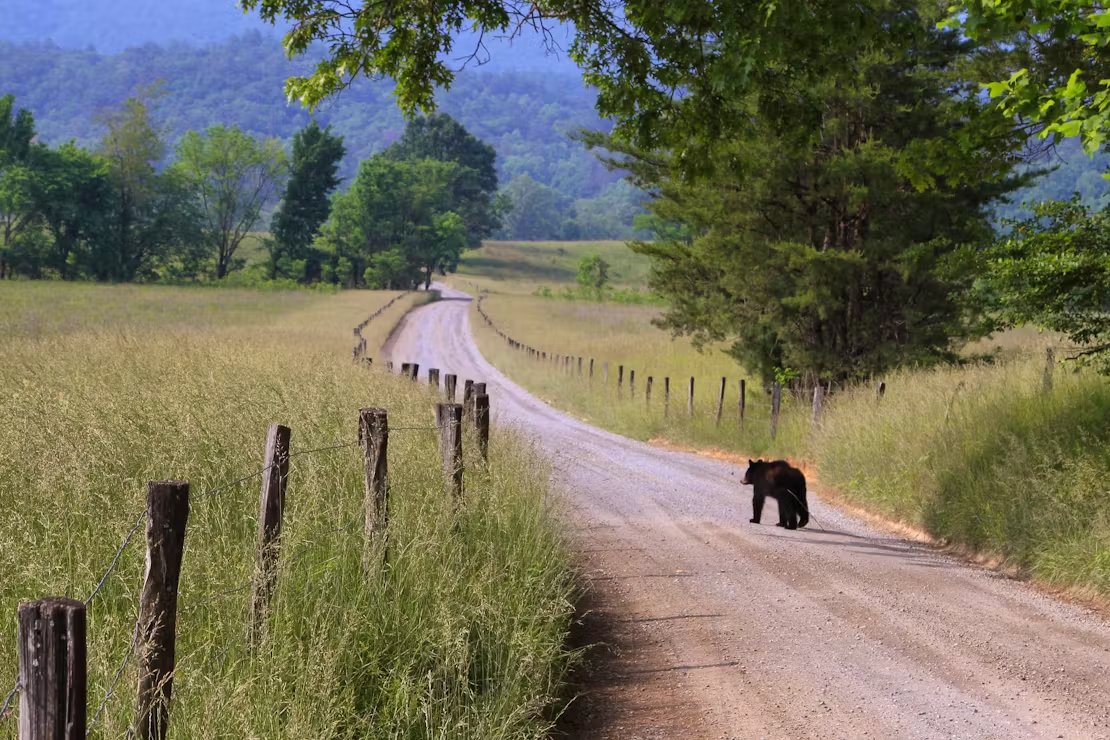Join our mobile Rapid Response Network!
You can be the first to hear about how we’re going to hold this administration accountable and how you can fight back for wildlife!
The American black bear is the smallest of the three bears species found in North America and is found only in North America.
Black bears have short, non-retractable claws that give them an excellent tree-climbing ability.
Black bear fur is usually a uniform color except for a brown muzzle and light markings that sometimes appear on their chests. Eastern populations are usually black in color while western populations often show brown, cinnamon, and blond coloration in addition to black. Black bears with white-bluish fur are known as Kermode (glacier) bears and these unique color phases are only found in coastal British Columbia, Canada.
Habitat loss, being hit by cars and conflict with humans are all threats to black bears.

Defenders' Impact
Defenders of Wildlife is a leading advocate for black bear recovery.
Thanks to conservation efforts by the state of Florida, Defenders of Wildlife and others, the Florida black bear was removed from the Florida state threatened species list on August 24, 2012. We work with the Florida Fish and Wildlife Conservation Commission on developing long-term plans for managing and connecting bear habitat throughout the state and reducing bear mortality on roads.
We have also provided a variety of coexistence programs and resources, such as bear-resistant dumpsters, to help prevent human-bear conflicts.
You can be a part of the solution for endangered species: support our efforts to protect the wild!
What You Can Do
If you live in black bear country:
- practice coexistence and avoid attracting bears into neighborhoods, campsites or near roads with food items.
- Protect private, state and federal land that is prime habitat for bears.
- Watch out for bears while driving.
Support our work to save endangered and imperiled species and the habitat they need to survive!

About
The American black bear is distributed throughout North America, from Canada to Mexico and in at least 40 states in the U.S. They historically occupied nearly all of the forested regions of North America, but in the U.S., they are now restricted to the forested areas less densely occupied by humans.
It is estimated that there are at least 600,000 black bears in North America. In the United States, there are estimated to be over 300,000 individuals. However, the Louisiana black bear (Ursus americanus luteolu) and Florida black bear (Ursus americanus floridanus) are unique subspecies with small populations: more than 4,000 Florida black bears and an estimated 500-750 Louisiana black bears, Louisiana’s state mammal. It was removed from the federal endangered species list in 2016.
Black bears tend to be solitary animals, with the exception of mothers and cubs. The bears usually forage alone but will tolerate each other and forage in groups if there is an abundance of food in one area. Most black bears experience reduced activity and den, depending on local weather conditions and availability of food during the winter months. However, bears in southern states den for shorter periods and sleep less deeply than bears in colder climates.
Cubs remain with the mother for a year and a half or more, even though they are weaned at 6-8 months of age. Females only reproduce every second year (or more). Should the young die for some reason, the female may reproduce again after only one year.
Mating Season: Summer
Gestation: 63-70 days
Litter Size: 1-6 cubs; Florida black bears average 2-3 cubs
American black bears are omnivorous: plants, fruits, nuts, insects, honey, salmon, small mammals and carrion. In northern regions, they eat spawning salmon. Black bears will also occasionally kill young deer or moose calves. In Florida, black bears eat mostly plant matter. All bears have an excellent sense of smell and they are easily lured into human communities by unsecured garbage, dirty barbecue grills, bird feeders, pet food and other food attractants that can lead to conflict situations.
Featured
Play Smart: Bear Identification Card
The North Cascades has more than 6.3 million acres of great habitat for bears. Hundreds of black bears and a handful of grizzlies (less than 10) inhabit the area. To safely recreate in bear country, you have to Play Smart
News










